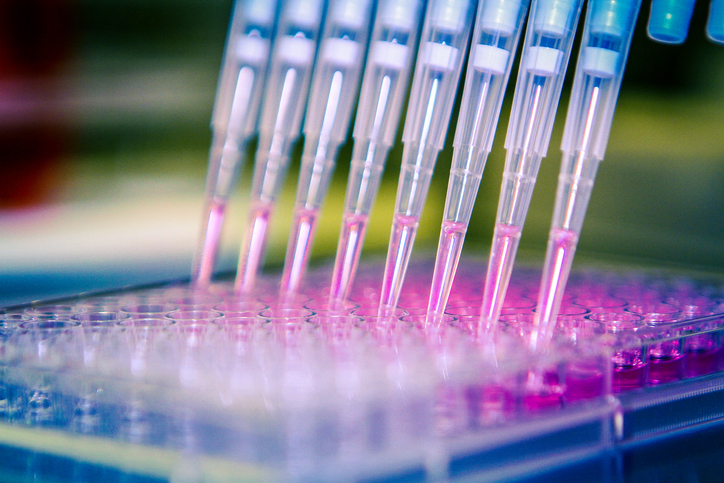Matrix effects

Introduction
This is the sixth post in a series on ELISA troubleshooting. This one is going to look at ‘matrix effects’.
Firstly, what is a matrix effect and how would you know if you had one?
When the components and molecules present in your sample type (e.g. plasma or serum) begin to interfere with your assays ability to detect whatever analyte you’re interested in, that is a matrix effect.
Now, how would you know if you were seeing a matrix effect in your assay? Well, it’s not always straight forward. You’d have to have some reason to suspect it. This might be, for example, getting a result for a sample far lower than you’d expected, or seeing a high signal to noise ratio. It’s also one of the first things you should expect when using a new sample type in an existing ELISA that has not been validated for it. Using serum in an ELISA developed for cell culture media, for example.
The best way to determine if there is a matrix effect present in your assay is to spike a known amount of the analyte of interest into a blank sample. i.e. the matrix you’ll be analysing. If the result from the ELISA is wildly different from what you’d expected, then you’ve probably got a matrix effect.
Matrix effects can be caused by a lot of different variables in your sample matrix. For example, component such as phospholipids, salt, pH, viscosity, or direct interaction between sample and assay components (the presence of some antibody in serum which is binding to your capture antibody, for example)
So, how to fix, or at the least reduce the matrix effect?
Use the matrix
Some matrix effects may be overcome by using the same matrix for calibrators, QC samples and samples.
For example, if you are analysing serum, use serum to dilute and prepare your calibrators and QC samples. I.e make them as similar to the sample type as much as possible. This might mean using pooled serum which you’ve pre-screened for the absence of the analyte of interest, to do so.
This may require a little further development of the assay, re-balancing of washing steps or capture and detection antibody, but should compensate for any matrix effects.
Dilution
It may be possible to dilute out your matrix effects without damaging the assay. Though to do so would often require a sensitive assay as a sample dilution of 2 to 5-fold might be needed, i.e. you need to be sure the results won’t fall outside of the assay range.
If you try this, be sure to dilute sample and your standard curve in the using the same diluents and to take the dilution factor into account when interpreting your results.
Sample pre-treatment
Some form of pre-treatment might be needed, here a couple of options.
Centrifuge.
It may be that some non-soluble assay component is interfering in your assay. Centrifuging your sample before analysis might be a good way to avoid this, separating out matrix components from the soluble analyte of interest.
Extraction
It may be that you will need to perform some form of extraction procedure on your samples, such as filtration, dialysis or using a protein G column, purifying the analyte before analysing it. Whilst this will end up making the whole procedure lengthier, it can be a reliable and reproducible step.
Filed Under : Antibodies, ELISA








